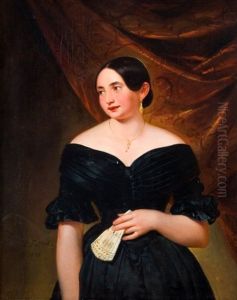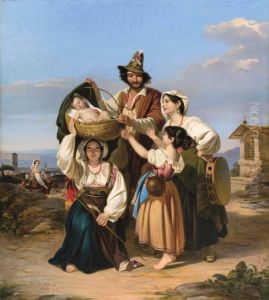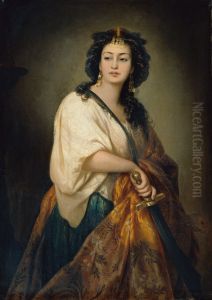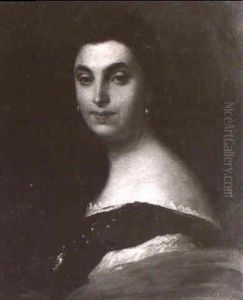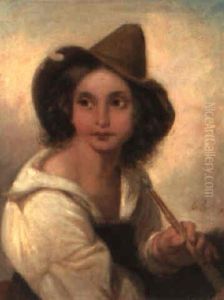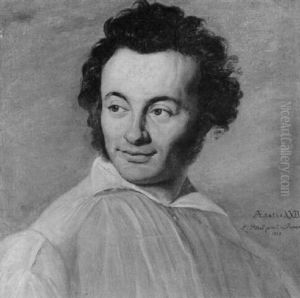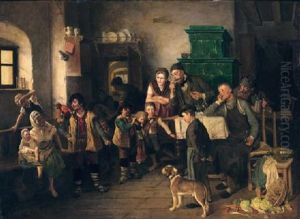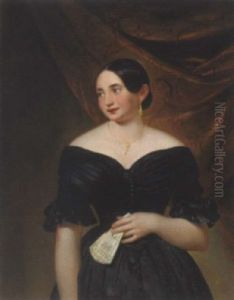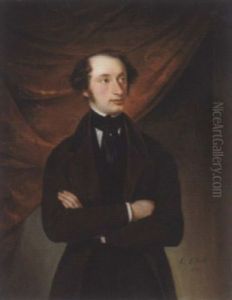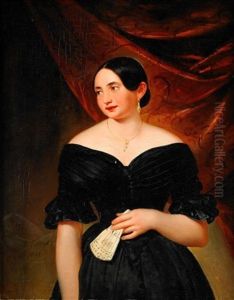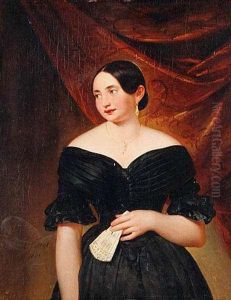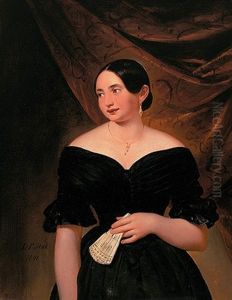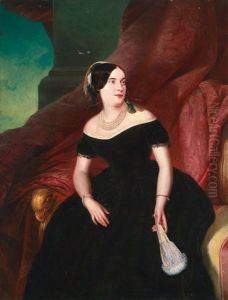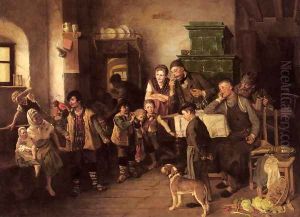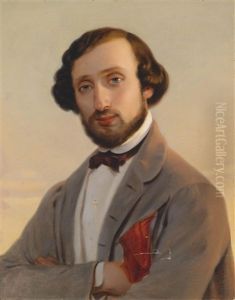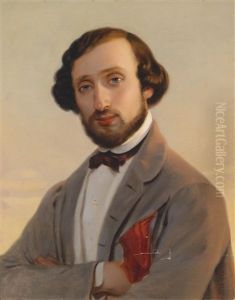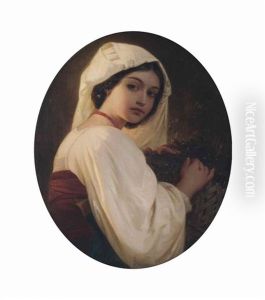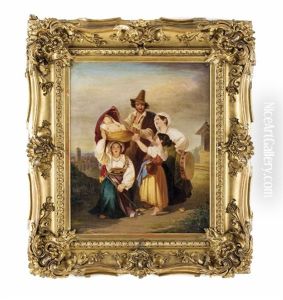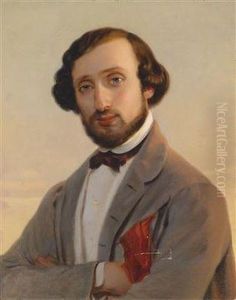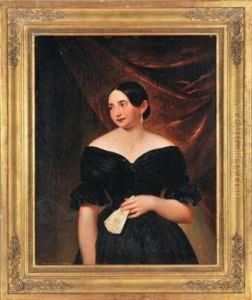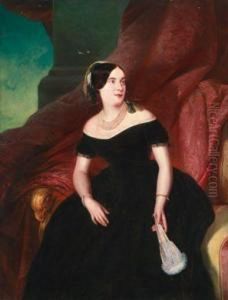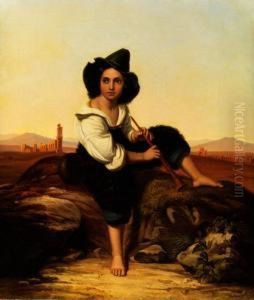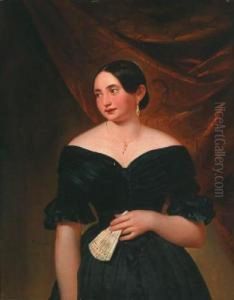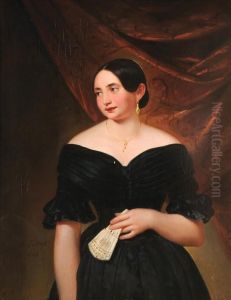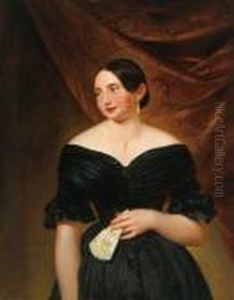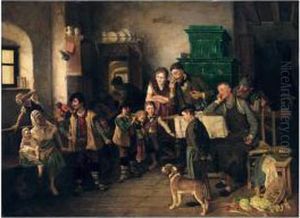Leopold Pollak Paintings
Leopold Pollak was a Czech painter who was born on January 29, 1806, in Prague. He was known for his skillful portrait paintings and historical scenes. Pollak's artistic journey began at the Prague Academy, where he studied under the guidance of renowned painter Christian Ruben. Seeking to further his education and experience, Pollak moved to Rome in 1827, which was a center for artistic learning and a magnet for artists at the time. In Rome, he became a part of the circle of German artists and was influenced by the Nazarene movement, which aimed to revive the spirituality and sincerity found in medieval and early Renaissance art.
Pollak's work often reflected his interest in religious and historical subjects, with a strong emphasis on emotional expression and detail. He became quite successful in Italy, receiving commissions from various patrons, including the aristocracy and religious institutions. One of his notable works is the 'Madonna del Parto', an intimate portrayal of the Virgin Mary.
Throughout his career, Pollak maintained ties with his homeland, sending works back to Prague and contributing to the art scene there. However, he spent the majority of his life in Italy, where he enjoyed a successful career. Pollak's paintings were celebrated for their vivid realism, attention to detail, and the emotional depth of his figures.
Leopold Pollak's legacy is marked by his contribution to the art of portraiture and religious painting. His works are preserved in various collections and museums, offering insight into the 19th-century art world. Pollak passed away on November 14, 1880, in Rome, leaving behind a body of work that continues to be appreciated for its historical and artistic value.
